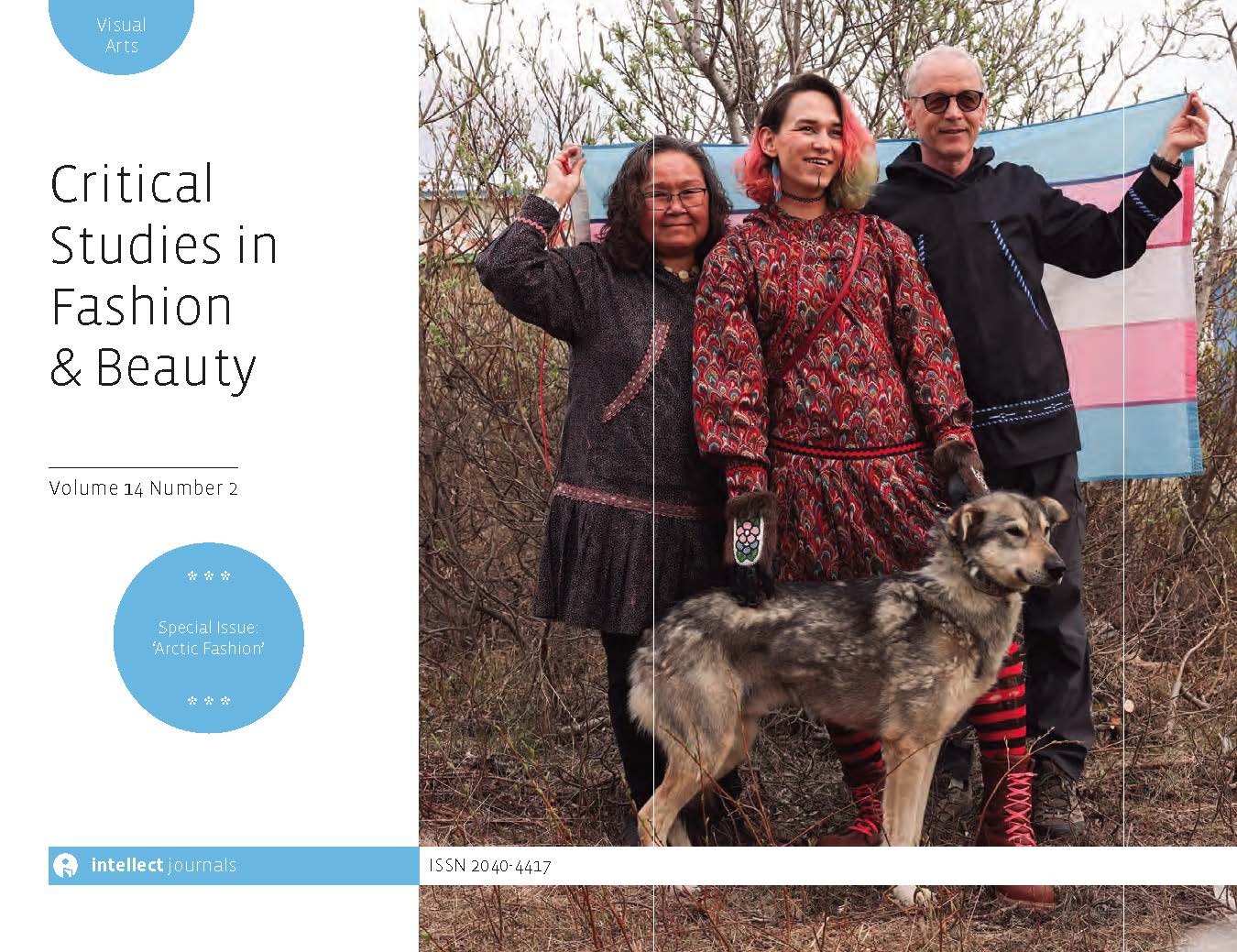
Full text loading...

This article presents and discusses the development of Iñupiat (North Alaskan Inuit) fashion of atikłuk (‘inner garment’) and atigi (‘outerwear’) over time, with a focus on adoption and adaptation, linked to the concept of cultural authentication. It is based on the author’s fieldwork in the winter of 1997 and the summer of 1998, which included participant observations and interviews with seamstresses from the Iñupiat villages of Kaktovik and Utqiaġvik at the North Slope of Alaska, literature reviews, observations from museums and archival photos. The second part of this article involves a case study that focuses on a young Iñupiat trans woman and her mother in 2022. Together they designed a new fabric (instead of leather) for an atikłuk. The case show how she adopts the contemporary Iñupiat garment and adapts it to her own style.

Article metrics loading...

Full text loading...
References


Data & Media loading...

Publication Date:
https://doi.org/10.1386/csfb_00066_1 Published content will be available immediately after check-out or when it is released in case of a pre-order. Please make sure to be logged in to see all available purchase options.